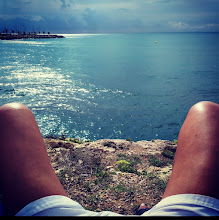miércoles, 14 de agosto de 2024
ANDREA DEL SARTO 1486-1530 Firenze
Andrea del Sarto (Gualfonda, near Florence, July 16, 1486 - January 21, 1531) was an Italian Renaissance painter.[1]
Biography
Son of a tailor (in Italian «sarto»[2]) named Agnolo di Francesco and Costanza di Silvestro, also the daughter of a tailor, at the age of seven he became an apprentice of a painter named Gian Barile[3] who , seeing his great progress, sent him to the workshop of Piero de Cosimo.[4][3]
From 1508, they are his first works, directly inspired by the painters that were most familiar to him and his friend Franciabigio. The first product of their association may have been the Baptism of Christ for the Florentine Compagnia dello Scalzo, the beginning of a series of monochrome frescoes.[3] When the partnership dissolved, Sarto's style bore the stamp of individuality. According to the Encyclopaedia Britannica, "she is marked throughout her career by an interest, exceptional among the Florentines, for the effects of color and atmosphere and for sophisticated informality and the natural expression of emotion".[5]
Birth of the Virgin (detail), 1509–10, SS Annunziata, Chiostrino dei Voti, Florence
Andrea del Sarto, The restored Death and Child of S Filippo Benizi (detail), 1509f, SS Annunziata, Chiostrino dei Voti, Florence
The friars of the Annunziata convent commissioned him to complete the unfinished frescoes begun in 1460 by Alessio Baldovinetti and continued by Cosimo Rosselli.
Frescoes in SS Annunziata in Florence
From 1509 to 1514, the Servite Order employed Del Sarto, Franciabigio and Andrea Feltrini in a program of frescoes in the Basilica della Santissima Annunziata di Firenze.[6] Sarto completed seven frescoes in the vestibule or atrium (the chiostro dei voti) in front of the Servite church, five of which illustrated the Life and Miracles of Filippo Benizzi,[7] a Servite saint who died in 1285 (canonized in 1671). They did it quickly, representing the saint healing a leper with the gift of his robe; foretell the evil end of some blasphemers; and restore a girl possessed by a demon. The last two frescoes in the series depicted Filippo Benizzi's healing of a child on his deathbed and the healing of sick adults and children through his relic vestments preserved in the church. All five frescoes were completed before the end of 1510.[2] The original contract also required him to paint five scenes from the life and miracles of Saint Sebastian, but he told the Servites that he no longer wanted to continue with the second cycle, most likely because of the low remuneration. The Servites convinced him to paint two more frescoes in the courtyard, albeit of a different theme: a Procession of the Magi (which contains a self-portrait) completed in 1511 and a Nativity of the Virgin. These paintings were respected, the correctness of contours was particularly admired, and earned Sarto the nickname "Andrea senza errori" (Andrea the perfect). Around 1512 he painted an Annunciation (Annunciation of San Gallo) in the Church of San Gallo and a Wedding of Saint Catherine (Dresden).[8]
By 1514 Andrea had completed his last two frescoes in the Chiostro dei Voti (SS. Annunziata), including his masterpiece, the Nativity of the Virgin, which fuses the influence of Leonardo, Ghirlandaio and Fra Bartolomeo.[9] In November 1515 he had finished in the nearby Chiostro of the Confraternity of Sant Joan Baptista, commonly known as l'Escalsà the Allegory of Justice and the Baptist preaching in the desert, followed in 1517 by John Baptizing the People.[2]
He is believed to have traveled to Rome around 1510, which would have allowed him to learn about Raphael's pictorial developments in the Adoration of the Magi (1511) and the Nativity of the Virgin (1514). Its formal language, of a fifteenth century narrative, is enriched with the nuanced atmospheres and styles typical of Leonardo and Raphael. The large number of drawings from the following period, which gave him fame as a draftsman, show that he was very attentive to the teachings of Michelangelo, to the singularity of the plastic image - such as the Virgin Mary with Child and St. John the Child from the Borghese Gallery, in which, in addition to the foreshortenings of the child's face and the outstretched arm of Saint John, the representation shows a frantic dynamism, accentuated by the cold composition of colors.
In 1514, he began working on the monochrome frescoes of the Scalzo cloister in Florence, which he completed, with many interruptions, in 1526, and became a long experience that crossed his entire work.
He dedicated himself to portraiture sporadically. This was a genre far removed from Andrea's interests, more inclined to the complex articulation of figuration, as can be seen in the Portrait of a Woman, in the Prado Museum, which represents his wife; or in the Sculptor's Portrait, today in London, in which there are those who have seen his friend Jacopo Sansovino or even Baccio Bandinelli.
Suscribirse a:
Enviar comentarios (Atom)
ALESSANDRO VAROTARI 'Padovanino' 1588-1649 Padova, Italia
Alessandro Leone Varotari (Padua; 4 de abril de 1588-Venecia; 20 de julio de 1649), conocido como Il Padovanino, fue un pintor italiano, ...

-
“THE UNBEARABLE INDIFFERENCE” BY MIGUEL TADEO, NEW LGTBIQ EXHIBITION OF TRANSSEXUALIA IN CASA DE VACAS TRANSEXUALIA.ORG • JUNE 28, 2024 •...
-
Mario Moore, a Detroit native, received a BFA from the College for Creative Studies, Detroit, MI in 2009 and an MFA in Painting from the ...
-
weyrhere - weyrq nsfw X https://twitter.com › weyrhere Art! This is the NSFW account. I use AI tools and digital painting, no images ar...

































































No hay comentarios:
Publicar un comentario